Image
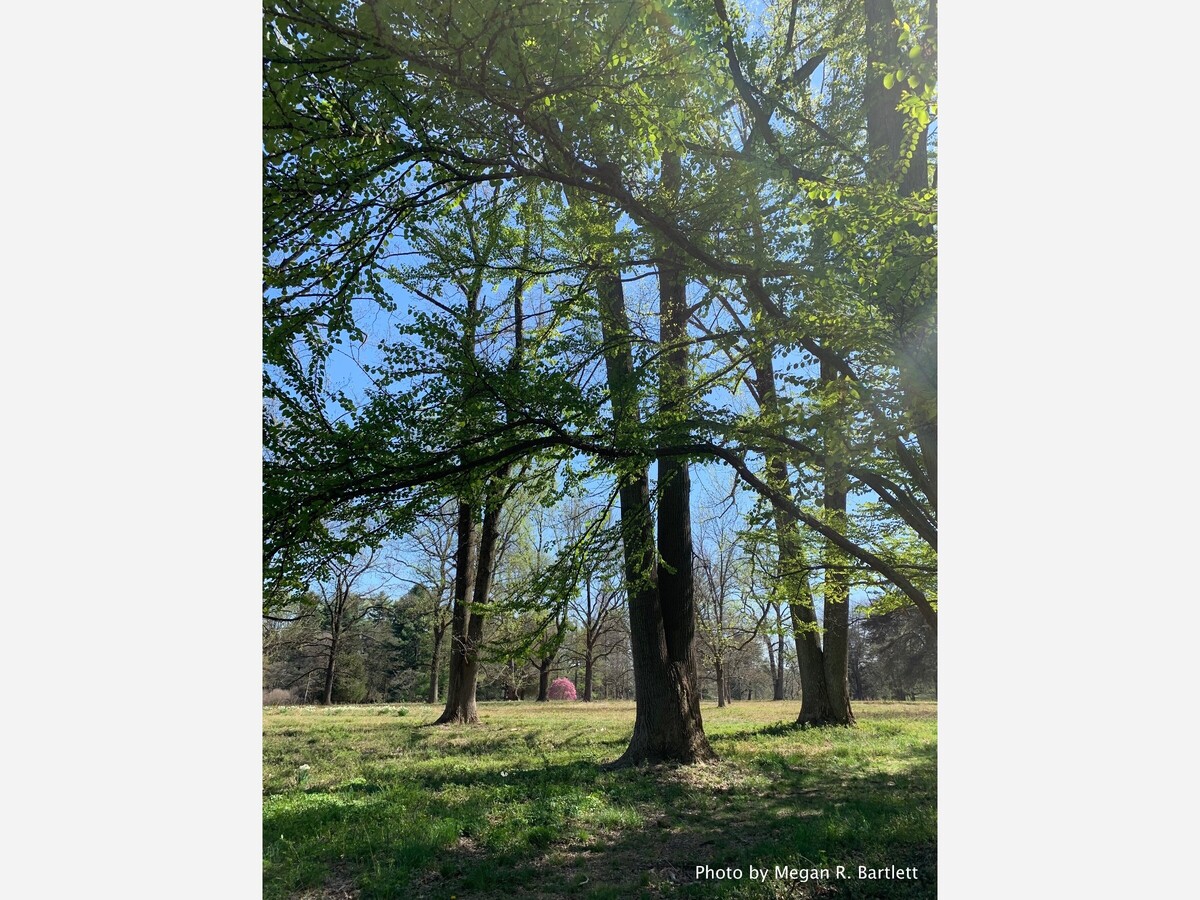
by Contributing Writer: Megan R. Bartlett*
Throughout this series, I have shared ways to cultivate mysticism in our daily lives. We have looked at the way the Divine speaks to us through nature, solitude, stillness, and silence. Another way to create the conditions for mystical experience is to simply learn about past and present mystics and contemplate their words of wisdom.
My own journey to understanding and cultivating mysticism began in September 1995 at Gettysburg College, when I had a mystical experience of my own, a profound and meaningful sense of the presence of the Divine, accompanied by an inner “hearing” of the words, “It’s okay, my child. I’m here.” Years later, I formally studied mysticism as part of my spiritual direction program at Neumann University. I found inspiration in Teresa of Avila’s wisdom: “It is love alone that gives worth to all things” and in Therese of Liseux’s “Little Way”: “Do small things with great love.”
Most world religions have a branch of mysticism or individuals of the faith who were mystics. A quick search of the Berks County Library system impressed me with its representation of writings by and about mystics such as 13th century Japanese-born Buddhist monk Dogen and 13th century Iranian poet Jalāl al-Dīn Muḥammad Rūmī (“Rumi”). The library system has books on Jewish mysticism and the Jewish mystic and healer known as the Baal Shem Tov. You will also find information about Christian mystics such as Thomas Merton, Teresa of Avila, Howard Thurman, and Padre Pio.
It was the story of Padre Pio that drew me back to the Boyertown area on a recent summer afternoon. The National Centre for Padre Pio (include link here: https://www.padrepio.org) is located in Barto and reveals the life and ministry of Padre Pio, a Capuchin Franciscan priest and mystic who has ties to this region through the miraculous healing of a two-year-old Norristown girl, Vera Marie Calandra, in Italy in September 1968. In gratitude for their daughter’s healing, Vera and Harry Calandra founded the Centre in 1971 as a way to “bring souls to God through the intercession of Padre Pio”. It was a modest collection of history and artifacts in a small barn until its redesign and rededication as a full spirituality center in the late 1990s.
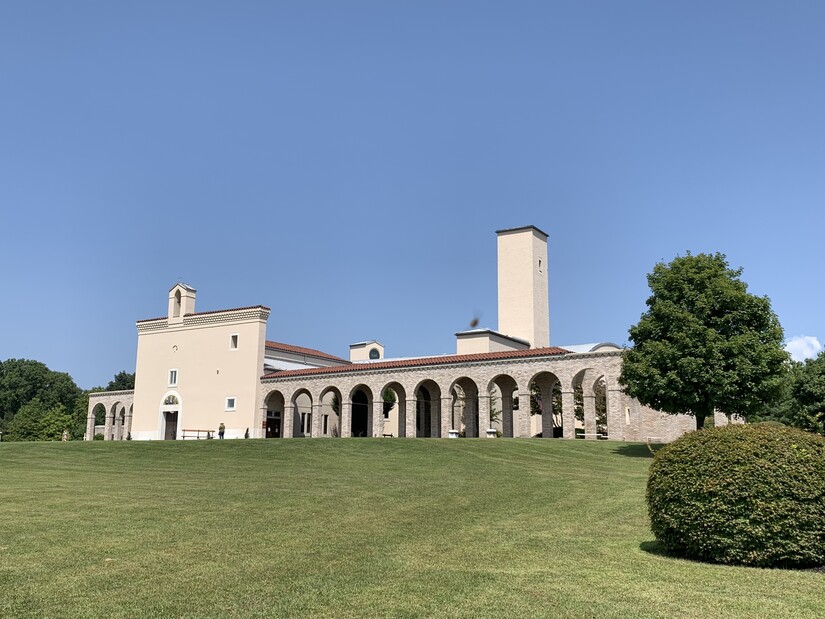
As I turned onto the long and winding driveway of the Centre, I was impressed by the view of the buildings – a museum to the left and, on the right, the arched walkway modeled after the one in San Giovanni Rotondo, Italy where Padre Pio lived. The walkway leads to the spirituality center and chapel where Mass is held several times a month. When I got out of my car, I noticed a group of Spanish speaking visitors taking photos around a statue of Padre Pio.
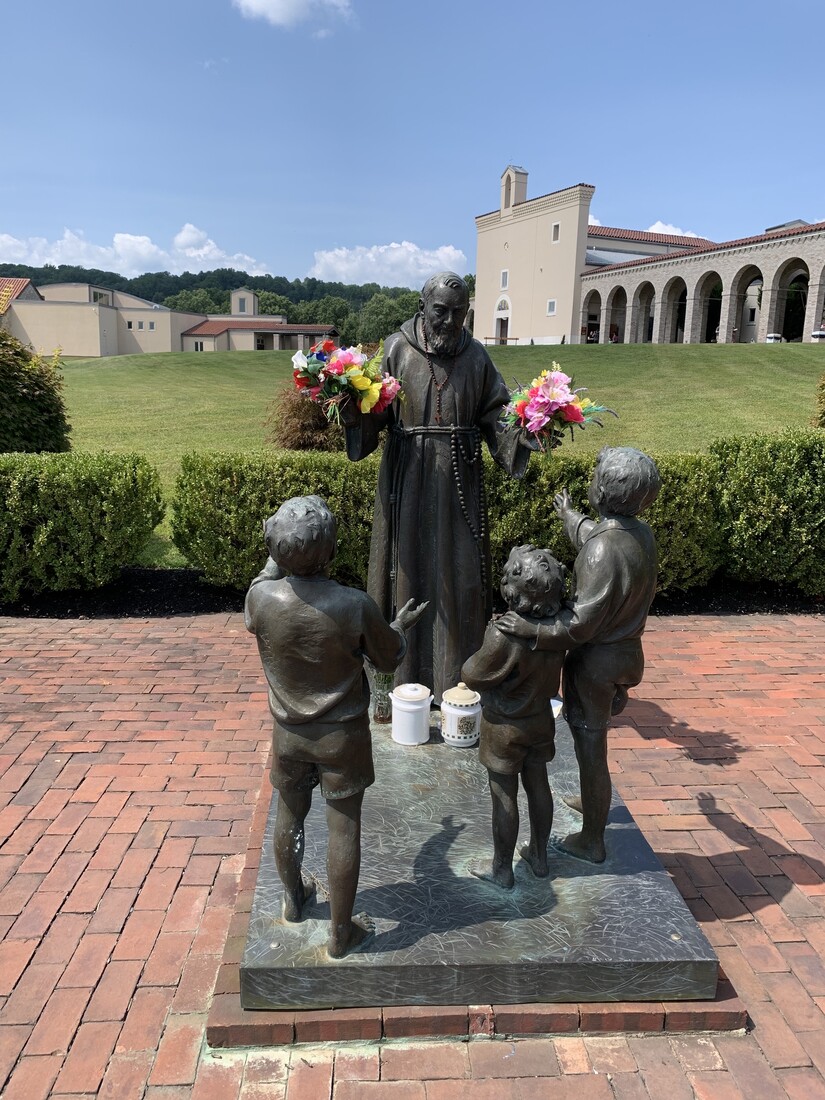
I followed the path to an outdoor votive candle garden where a small group was gathered, speaking prayers in Spanish and lighting candles while others wrote their prayer intentions in a small book in the corner of the walled garden. Through an arched window on the opposite wall, I admired the view of Barto’s fields and the rolling hills in the distance.
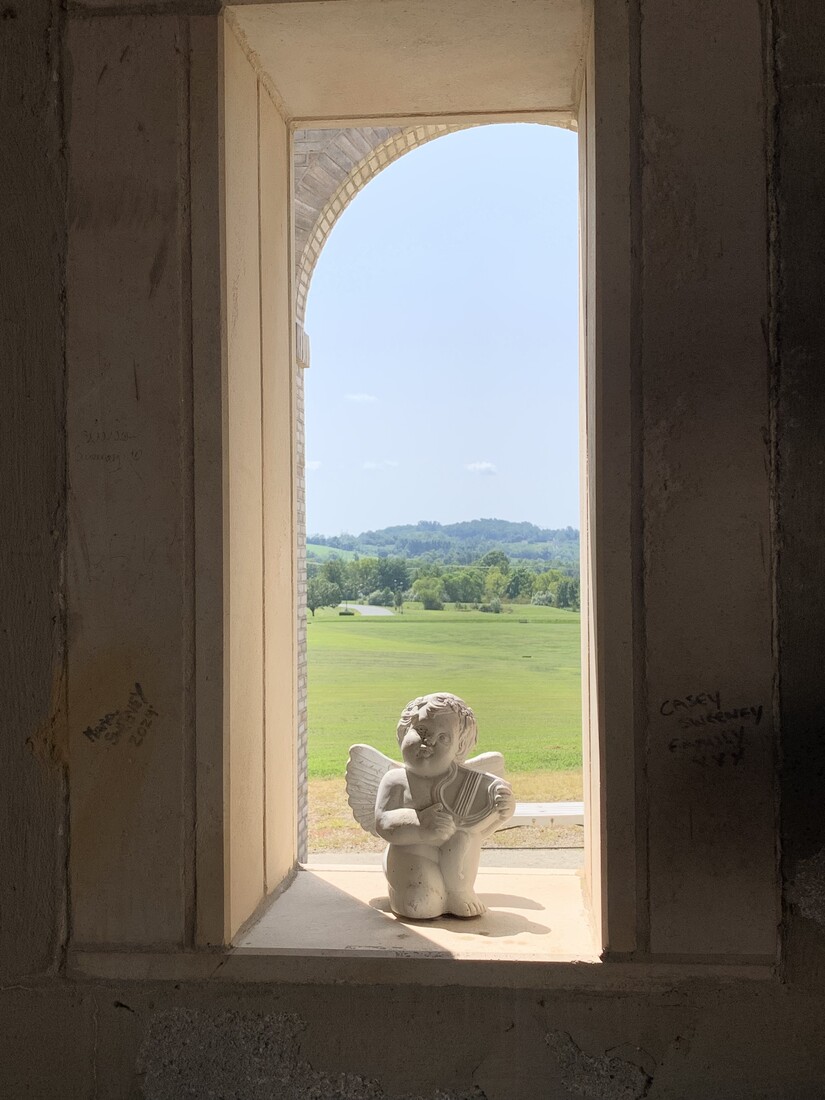
In another area of the garden were two statues, one of Padre Pio and one of St. Francis of Assisi, both in front of beautiful tiled mosaics. Padre Pio’s smile was apparent and brought a smile to my own face.
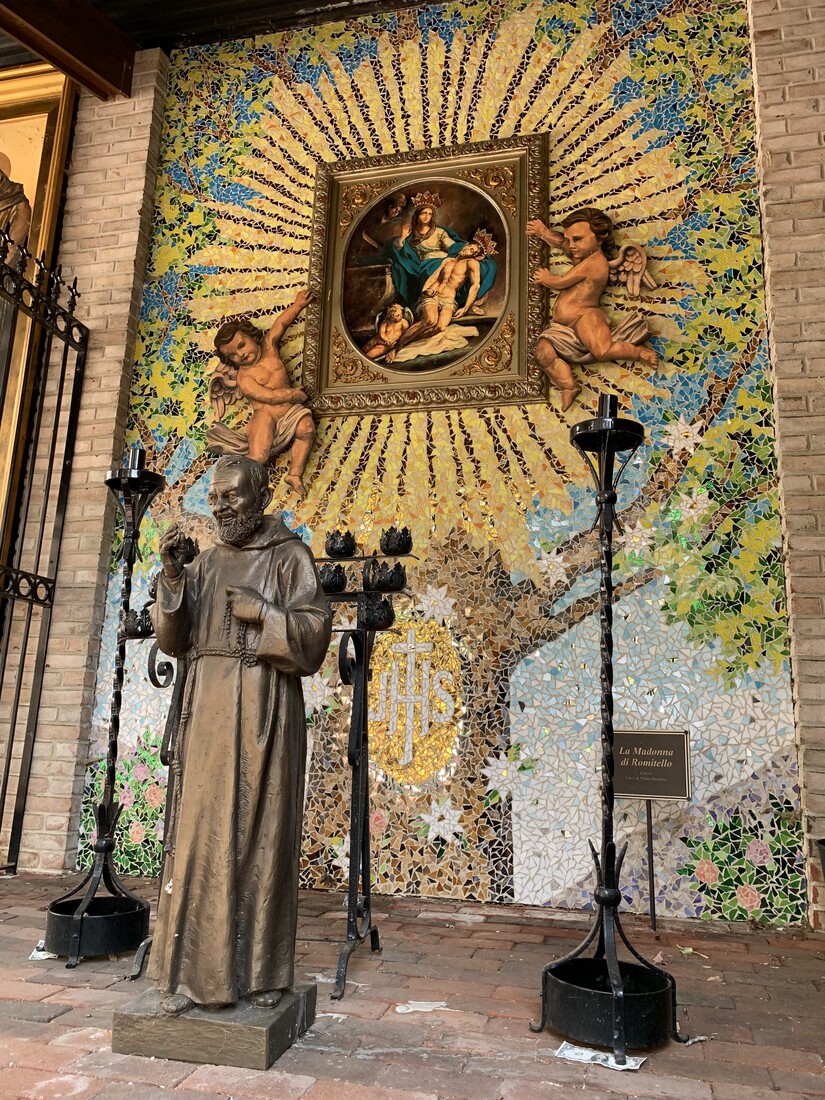
Eager to learn more about his life (include link: https://www.padrepio.org/about/padre-pios-story/), I headed to the museum where I began with a movie about the two miracles ascribed to Padre Pio, one involving Vera Marie and the other involving a man who suffered a crushed skull after an accident. It was difficult to hold back tears as I listened to the testimony of the people who were healed and the interviews of the surgeons and nurses who have no scientific explanation for these healings.
When the movie ended, I walked around the museum, fascinated by the replicas of the houses and rooms where Padre Pio lived, from his 1887 birth in Pietrelcina, Italy to his 1968 death in San Giovanni Rotondo. Most compelling, though, are the stories and relics from Padre Pio’s mystical experiences. Among other things, he is said to have experienced the stigmata, a visible wounding of the hands, feet, and side that correspond with the wounds Jesus endured during crucifixion. These wounds were said to have bled and remained unhealed for fifty years until the final three days before his death. Although grotesque to some, the museum displays several blood-stained garments worn by Padre Pio, as a testament to this mystical experience.
Before leaving the Centre, I went inside the spirituality center and chapel where many visitors were writing prayer intentions, sitting or kneeling in the pews, or lighting candles. I thought about the universality of pain and suffering, of the burdens these people might be carrying, and of their longing and hope for healing through Padre Pio’s intercession. I thought of my own burdens and the days when hope seems far.
Padre Pio is quoted as saying, “Pray, hope, and don’t worry. Worry is useless. Our Merciful Lord will listen to your prayer.” As I drove away from the Centre that day, I vowed to hope more and worry less. I can’t say that I’ve always succeeded, but every now and again, when hope feels easier than usual, I smile and wonder if Padre Pio had something to do with it.
The National Centre for Padre Pio is free (donations welcome) and open to the public 9am – 4:30pm Monday through Saturday and 11am – 4pm Sunday. To schedule a pilgrimage, attend an event, or attend Mass, you can learn more on the website. (include link: https://www.padrepio.org/visit/)
* Megan R. Bartlett is a ’95 BASH alum who now lives in the Philadelphia area. She is a licensed professional counselor and certified spiritual director who enjoys crafting, writing, and communing with Nature, especially her beloved cats.